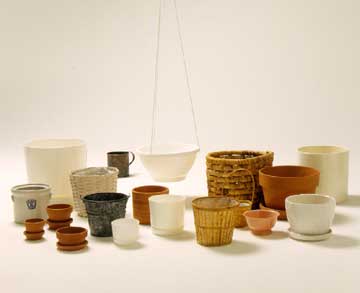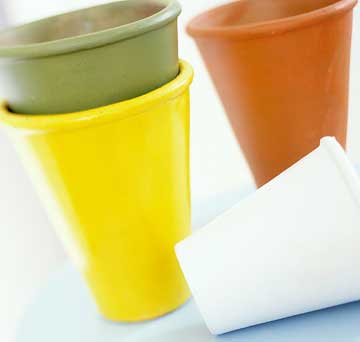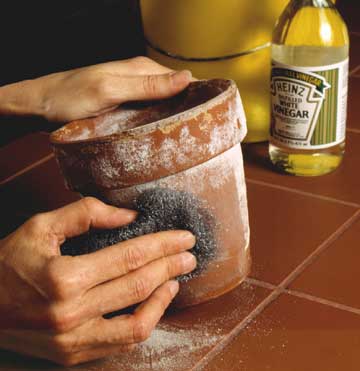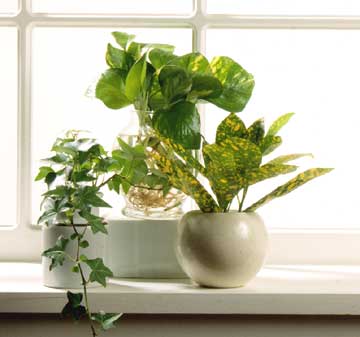





 There are pots and baskets to fitevery plant and personality.
There are pots and baskets to fitevery plant and personality.
Most houseplants today are sold in standard plastic pots. Some plant owners prefer to replace these pots. They choose from pots that come in an almost-infinite variety of materials, types, sizes, and colors.
At its simplest level, the purpose of a container is to hold the right amount of growing medium for the plant. In other words, the container you choose should match the size of your plant. Small plants should be in small containers and large plants in large containers.
Plants that are too small for their containers look out of proportion and grow poorly since the soil stays overly moist for too long a time. Plants that are too large for their containers also look out of proportion. They become root-bound (roots fill up the whole pot, causing stunted growth), and often topple over, since their pots don't have enough weight to hold them up.
continue reading below Pots come not only in lots ofsizes, but also in lots of colors.
Pots come not only in lots ofsizes, but also in lots of colors.
At one time, the clay pot was the most common container for indoor plants. Clay pots are attractive, heavy (ideal for big plants), and porous (excellent for bromeliads, cacti, ferns, orchids, and succulents). Unfortunately, clay pots break easily, need to be watered frequently, and are hard to clean. They also are becoming expensive.
The most popular container today is the plastic pot. It comes in an assortment of colors and is lightweight (plastic is an excellent material for hanging baskets), easy to clean, and inexpensive. One major advantage of plastic over clay is that, because plastic does not absorb moisture from the soil the way clay does, plants in plastic pots don't need to be watered as frequently. Normally, plastic is quite tough, but it can break in cold weather.
Other materials for houseplant containers include metal, basketry, treated or rot-resistant wood, glazed pottery, and glass. Containers made from these materials, though, usually are used only as bigger pots to surround smaller, more-functional ones, or for other special purposes.
Pots come in a variety of sizes. The width of the opening at the top determines the size. A 4-inch pot has an opening 4 inches wide. Most pots are as deep as they are wide. Azalea pots, however, are only three-fourths as deep as they are wide; bulb pots are half as deep. Growers have found that some plants look and grow better in shallow pots.
Keep pots clean to prevent disease. If you plan to reuse a pot, clean it well both inside and out. Clay pots often get a white crust on them after prolonged use. To remove this crust, scrub with a steel-wool pad or stiff brush in a vinegar and water solution. If the crust is thick, brush first with a dry steel wool pad. Rinse pots then soak them in a bleach solution (1 part bleach to 9 parts water) for 30 minutes. Rinse again.
 Clean clay pots.
Clean clay pots.
To avoid infecting plants with disease, scrub all used pots carefully, inside and out, before reusing. To remove salt and clinging earth from clay pots, rub with steel wool and diluted vinegar. Then soak pots in a bleach solution.
 Growing plants in water.
Growing plants in water.
For best results, use opaque jars when growing plants in water. To keep the water fresh, change it frequently and add small bits of charcoal. Add water-soluble fertilizers for rich foliage.
Clean plastic pots with a cloth dipped in warm soapy water. Scrub the pot until it's completely free of soil and grime. Soak the pot in a bleach solution as you would a clay pot.
Sterilizing pots is especially important if you intend to start seeds in them. Nonsterile pots often contain bacteria that can infect the soil, causing seedlings to topple over from a condition called damping-off. The condition is serious because it can kill all seedlings if not prevented in the first place or treated with fungicide when first noticed.
Copyright © www.100flowers.win Botanic Garden All Rights Reserved